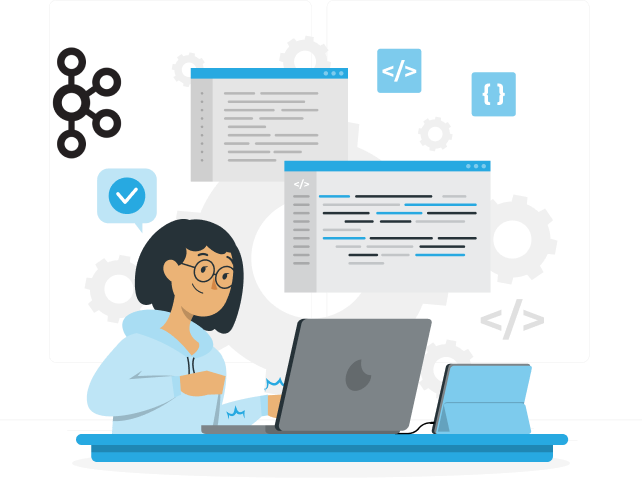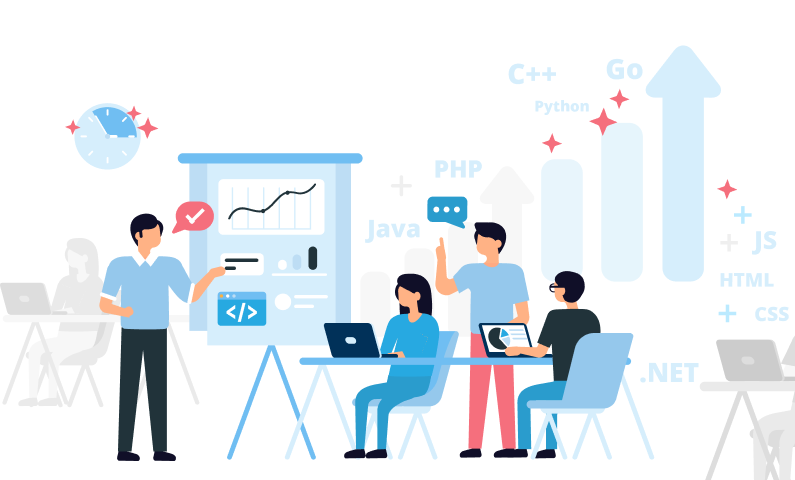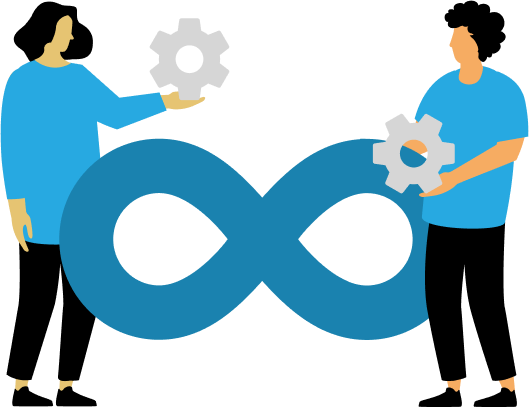Estimating the time and cost of software development is one of the most critical tasks in project management. The wrong estimates can lead to budget overruns, missed deadlines, and unhappy clients. However, by using the right estimation techniques and best practices, you can dramatically improve the accuracy of your software project cost estimation. In this all-inclusive guide, we’ll explore eight crucial clues that will help you improve your estimates for software development.
1. Know Software Estimation Techniques
To start with, one needs to know the different software effort estimation techniques. Each technique has its pros and cons; hence it is necessary to choose the right one suitable for your project. Some of the commonly used techniques are:
Expert Judgment
Expert Judgment entails information drawn from the project team members or stakeholders with a given experience base on similar projects that have happened before. Getting expert opinions enlighten one on the expected difficulties, resource usage, and estimated time durations.
Advantages
- It can easily draw from existing experience.
- It can be a first approximation especially when resources and information are scarce.
Disadvantages
- Since expert judgment draws on information that the consultant has based on experience, it is prone to human bias in estimations as people give different perceptions .
- Very dependent on individual experience
Analogous Estimating
It is the usage of historical information from previous similar projects. The basis from which the current estimates would be derived by means of comparisons from past experiences over the present project.
Advantages
- It is fast and effective using reliable historical information.
- Provides context along with reactivity in estimates.
Disadvantages
- May not take into account huge variances between projects.
- It is highly limited and dictated by the availability and quality of historical data.
Parametric Estimating
Parametric estimating utilizes statistical relationships between project variables to generate future results. This technique would be able to apply for example a metric like lines of code or function points, that makes it able to make an estimate, relative to benchmarks.
Advantages
- Less arbitrary and more measurable.
- Highly accurate if parameter definition is very clear and defined.
Disadvantages
- Historical data has to be used in order for the result to be considered highly accurate.
- To set up can be not so simple.
Three-Point Estimating
This method will produce three estimates for each activity: optimistic, pessimistic, and most likely. Using these three views will enable you to produce an average or weighted average that can absorb uncertainty.
Advantages
- It captures the variation and risk in estimates.
- It helps in making better decisions.
Disadvantages
- Can be very time-consuming if applied to all activities.
- It may need further training for team members who are not conversant with the technique.
Use a Software Estimation Document Template
You could even construct a software estimation document template to minimize complexity on the estimation process. To include all of these parts in your template are indispensable, including the following details:
Project Overview
An outline of the scope to which the project involves including its objectives and deliverables.
Assumptions
According to which the individual or the group assumes any piece of information taken up or adopted during the process
Estimation Techniques Used
Specify the estimation methods you applied, detailing why each was chosen. This transparency helps stakeholders understand the rationale behind the estimates and fosters trust in the process.
Task Breakdown
Use techniques like Work Breakdown Structure (WBS) to segment the project into tasks, sub-tasks, and deliverables. Include:
Major Deliverables: Identify high-level deliverables.
Sub-Tasks: For each major deliverable, outline sub-tasks and their interdependencies.
Time and Cost Estimates
Specify the estimated time and costs for each activity.
Revision and Approval Process
A good template will give you the confidence to maintain uniformity and clarity in your documentation and ensure easy communication of estimates to stakeholders.
2. Draft a Thorough Software Estimation Document Template
A comprehensive software estimation document template acts as the core of crystal-clear and efficient estimation. Your document should consist of:
Project Overview
Begin by summarizing the project, its objectives, and its deliverables. This provides context to your estimates and frames the perception stakeholders have of the project’s importance and goals.
Assumptions
Create a list of the assumptions made during the estimation exercise. For example, if you take liberties to assume certain technologies will be employed or specific resources will be available, capture them so that the basis of your estimate is clearly delineated.
Estimation Techniques Used
Identify the techniques you used in estimation and briefly explain why each of the techniques was adopted. That way, you make it clear to stakeholders that this process you have undertaken actually follows all the principles which form its basis.
Work Package
Use such a concept as Work Breakdown Structure (WBS) where you break up your work into tasks and subtasks, and for every subtask, give its deliverable. This involves the following:
Major Deliverables. Give the big picture view of what shall be produced.
Subtasks : Subtasks are activities undertaken toward a major deliverable with the inter-dependency also explained.
Justify your time and cost estimates. This will include your labor costs, overheads, and any provision you may have for contingency, such as the unexpected expenditures. The more you explain why, the more your stakeholders will have faith in the accuracy of your estimates.
Revisions and Approvals Process
Specify how you will revise and then get approvals for your estimates. A good revision process can help you present the feedback and make estimates appropriately revised.
You create a reference point for an effective documentation of estimates and further provide an easy way to communicate with stakeholders about software project cost estimation using a comprehensive template.
3. Analyze Historical Data for Software Project Cost Estimation
Analysis of past project historical data is probably the best method for increasing the quality of your estimates. A task-duration, resource-allocation, and project-complexity analysis can add significantly to the accuracy of software effort estimation.
Important Metrics to Analyze
1. Velocity: Calculate work done in the period to understand how capable your team is. So, if a team manages to complete 30 story points in a two-week sprint, you’ll be more able to project your future capacities.
2. Defect Rates: Review of defect rates on previous projects helps with quality assurance. When the defect rates are high, you’re going to spend more time just fixing bugs, and that ought to go into your estimate.
3. Resource Allocation: Have a look at how resources allocated to previous projects have really fared. If you have a role that somehow is always taking more than estimated, then future time allocations should be made correspondingly.
4. Compare the development time, graphic design time estimation with the actual working hours taken in the similar project. These lessons from previous projects can help polish estimates for future projects, as well.
5. Review after Project Completion: Get reviews after the project is closed. Identify what went on right and what did wrong. Use this knowledge to amend estimation techniques and accuracy within future projects.
Using that historical data, you can deliver more accurate estimates for similar projects in the future
4. Break Down Tasks into Manageable Units
The process of breaking down a project into smaller, manageable units is the very foundation of effective how to estimate time for a project. This will allow you to break down the complexity of each part, resources needed, and time to complete.
Steps for Task Breakdown
1. Determine Major Deliverables : Then, once you determine those major deliverables, try to break them down even further from there. Say you are building a full stack application: the main things you’re going to try to do would probably include frontend development, backend, database integration, and integrating the API.
2. Determined Sub-tasks for a Major : Then under the major tasks, for instance you have determined you want to do some frontend work then you’re going to develop UI, then start off with making the actual UI components that are functional; then the last major item is to test.
3. Estimate Time and Resources: While making an estimate for sub-tasks, estimate the resources and time required. While doing this, refer historical data and consult your team to make an informed estimate.
4. Agile Estimation Techniques: You are following Agile methodologies in your project. In such projects, the whole team collaborates to estimate tasks, and techniques like Planning Poker help build consensus and raise accuracy.
5. Review and Revise: Review your task breakdown regularly with your team to avoid missing anything. Revise estimates as necessary when there is new insight or change in project dynamics.
This detailed breakdown will make possible a more granular breakdown of the cost of developing software and clear out where the time and resources will be applied.
5. Use the Range of Thumb Rule
The thumb rule range is an estimate based on industry standards or personal experience. It can be used for a ballpark figure in the early stages of a project, thereby speeding up the decision-making process.
Common Thumb Rules:
Design Phase: Consumes about 20% of the overall project time.
Development Phase: Usually 50% to 60% of the project time.
Testing and QA: Usually consumes about 20% of the total project time.
Thumb rules are not absolute, but rather can be a good guideline during the initial phases of your software cost estimation activity. Remember they may be fine-tuned depending on the level of details as you continue to have project planning.
6. Include Graphic Design Time Estimates
If graphic design elements are part of your project, you will want to factor in **graphic design time estimates** when estimating your overall project. The complexity of the design can be very wide and depends on the requirements of your project and must therefore be factored into estimation.
Considerations
Design Complexity: The more complex the design, the more time-consuming it is. Complex animations, custom graphics, and responsive designs take more time in the design process.
Revisions: Allow for potential changes following suggestions from the clients. There are often several cycles in designing before acceptance.
Communication with the Developers: Communication between designers and developers saves rework and ensures that designs are feasible within the constraints of technology.
Design Tools and Materials: Your design group should have the software and materials needed to use. It makes the flow of the process much smoother, hence effective.
Graphical time estimates are used to incorporate the time estimate of your graphic design, making the software project cost estimation complete and realistic, which includes the critical aspects of the deliverables.
7. Use Software Development Estimation Methods Wisely
Different software development estimation methods can help in coming up with accurate estimates. Know the most popularly applied methods to further improve the overall estimation process:
Function Point Analysis
Function Point Analysis is used in measuring functionality to be provided to the user on their own requirements. The technique assigns a quantity for functionality to be delivered. Based on functionality, one could have improved estimates about the efforts needed and the amount of time required.
Advantages:
- It is useful and provides clear cut measurements as regards the functionalities. Helpful in project-to-project analysis.
Disadvantages:
- Its implementation demands special training by the persons engaged. Sets up is highly timeconsuming and elaborate in a way.
Story Points
A technique to estimate the amount of work required to achieve a specific user story: using story points enables teams to make judgments regarding complexity, but not with time. This enables the teams to be flexible.
Advantages:
- Teams work collaboratively.
- Compensation for a vague concept or ambiguity to estimate.
Disadvantages:
- It can be ambiguous and depends on people.
- Any value has to make sense consistently and in its application by a team as per its interpretation with regards to a story point.
Use Case Points
Use Case Points Estimate effort based on defined use cases for the software. This approach includes technical and environmental factors, especially helpful in projects focused on user interaction.
Advantages
- Focuses on the needs and requirements of users.
- Meets any project type
Disadvantages
- Use case documentation needs to be detailed.
- Difficult to apply when a team has less experience.
This depends on the nature of your project and the familiarity of your team with different techniques.
8. Application of a Software Development Cost Calculator
You can make finer estimates using a software development cost calculator. Such tools will allow you to put some concrete number on various aspects of your project, for example:
Cost Calculator Components
Development Hours: Determine the total hours required by breaking down the work and the capacity of the team. Enter each role now – developers, designers, QA staff, project managers, etc.
Resource Cost: Add in the cost of developers, designers, QA-ers, and all other team members. Add hourly rates and full-time equivalents.
Overheads and Contingencies: Include overhead tools, software license and contingency percent for incidental spend. You are so better prepared to face as much of those unexpected challengers.
How a cost calculator can prove helpful
Speed and efficiency: Getting an estimate on input parameter, it is pretty fast comparing it with a manual way. It saves time
Accuracy: there is definitely more control in the limit as compared to manual estimating of errors in calculations leading to more accurate estimates.
Scenario Analysis: Allows for the use of “what-if” scenarios based on the effects changes in scope or resources will have on costs and timelines.
By inputting project specifics into a calculator, you will be able to come up with a more realistic software cost estimate that is based on market rates and availability of resources.
Conclusion:
Improving your estimation process of software development requires a combination of effective techniques, good documentation, historical analysis, and continuous refinement. With these eight clues, you will definitely be able to make estimates that are much more accurate and ensure successful delivery.
This is what it’s all about: understanding how best to design software, good time estimation for your projects, which will arm the team to deliver good software solutions to meet expectations as expected by the clients with budget and schedule in line. It helps steer into the complex nature of developing software to make project progress more predictable and sure, bringing the project out for success.
For businesses, which require reliable software development services, Ajackus can be the right partner to guarantee accurate estimations makes all the difference. Check out options for your project and begin your path to successful software delivery today! Let’s speak!

Start a Project with Ajackus











































































